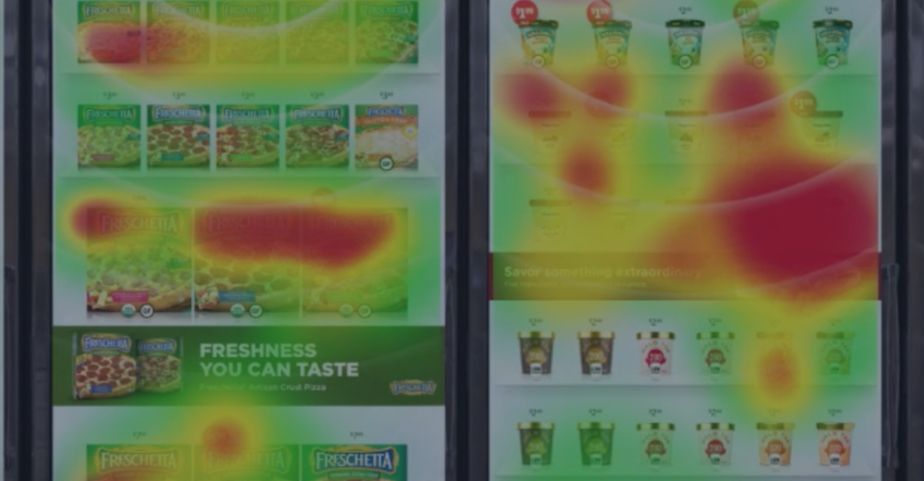New digital advertising units from Cooler Screens are helping to put the ohh! in OOH
Out of Home Advertising (OOH), which includes billboards and “captive formats” like elevators, lobbies, and theaters, stands out as one of the few traditional channels to enjoy year-over-year growth. According to the Out of Home Advertising Association of America, OOH advertising revenue rose 7.7 percent in the second quarter of 2019, and year-to-date the OOH industry is up 7 percent, which reflects its highest quarterly growth since 2007. Predicted to jump to $9 billion annually by 2022, OOH’s next wave of growth will come through innovations that take advantage of dynamic digital signage and local 5G networks that capture real-time customer data in order to influence or sway purchase decisions at moments of high purchase intent.

At Walgreen’s flagship store in Chicago, John Clavadetscher, the President of digital signage company Cooler Screens, is piloting new in-store video ads that turn refrigerator doors into huge, programmable video display panels. The units offer marketers a new platform to promote their products at the point of sale, supported with insights from real-time analytics and data to help manage inventory and serve up ads based on factors such as time of day, weather, foot traffic, and seasonality. The in-store digital ad units come in three flavors: full-screen vertical videos, horizontal “banner ads”, and smaller “social widgets” that can be affixed atop a product picture to differentiate it from other items in the refrigerator. As a former co-founder of cars.com, Clavadetscher said that his new company has consciously applied digital thinking to its new advertising unit – embracing a “digical” strategy to unleash new possibilities.

How Digital and Physical Concepts Converge in OOH
Made popular by a 2014 Harvard Business Review article, “digical strategy” introduced the idea of merging digital innovations into physical spaces (and vice-versa) as a creative way to drive new growth. For Cooler Screens, “digical” means combining traditional notions of retail with the conversion-centric world of online shopping. Here are examples of how Cooler Screens’ interactive advertising units bring “digical” to life:
Physical to Digital: Planograms – A retail concept focused on the optimal placement of products on the shelf in order to boost sales. Cooler Screens digitized the planogram in its ad units in order to entice customers with new visual experiences and provide clever new marketing opportunities. Digital marketers have (perhaps unwittingly) adopted the concept, as the battle for “shelf placement” on Google and Amazon has become crucial to success.

Physical to Digital: Violating the Aisle – Another traditional retail term associated with placing promotional collateral that sticks out into the aisle (therefore “violating the aisle”), or when unique promotional material is added to packaging to help a product stand out. For Cooler Screens, the bright, inviting vertical video units “violate the aisle” in such a way that could encourage customers to re-evaluate their consideration set at the moment of purchase.
Digital to Physical: Engagement – A well-worn digital term to judge the stickiness of a particular piece of content or experience. The engagement metric is a mixed bag when translated to the world of digital signage, particularly for the in-store Cooler Screen model, where user research revealed that people really wanted to click on the new screens and engage even more with the ads. But big problem: people waiting in line hate those higher engagement rates and therefore the decision to add touch-enabled functionality was shelved.

Digital to Physical: Impressions – A metric typically associated with digital banner ads or other digital advertisements, Cooler Screens has adopted the metric in the physical world by using cameras and sensors to measure the number of in-store impressions, supported by eye-tracking heat maps that indicate where customers are focused.
Digital: Contextual Targeting – Already built into ads that follow users around the Internet, the Cooler Screens platform enables real-time pricing, algorithmic promotions, A/B testing of ads, messaging, and product packaging – and other ways of pinpointing the right ad at the right time. Although rife with possibilities, Clavadetscher says most advertisers, for now, are simply re-purposing their television ads and display banners on the platform. He foresees a future where seasonal and real-time ads take the next step in influencing conversions. He pointed to a recent Miller Lite advertisement that might perform better with a Bears-themed football promotion.

